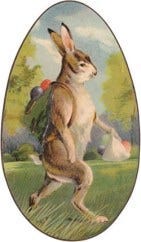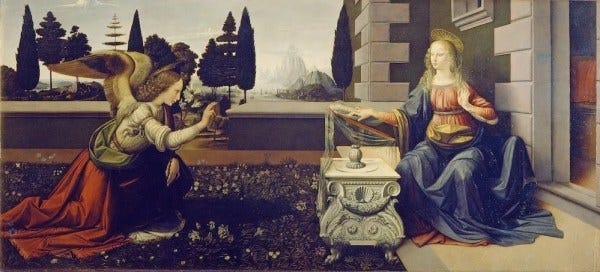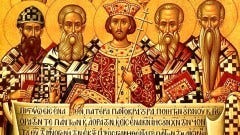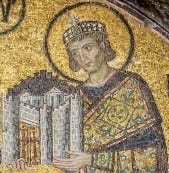
The most joyous of Christian festivals and one of the first celebrated by Christians across the Roman Empire commemorates the resurrection of Jesus Christ. It is set on the first Sunday after the full moon following the vernal equinox.
Meaning of the word Easter
There are several theories about where we got the word Easter.
The first is that when Christianity reached the Teutonic peoples, it incorporated many of their heathen (“of the heath”) rites into the great Christian feast day, according to the Venerable Bede. He was a monk who wrote the first history of Christianity in England. Easter month corresponded to April. Bede suggested that it had been dedicated to Eostre, or Ostara, the Teutonic goddess of the Spring and fertility.
However, modern scholars have been unable to find any references to the goddess Bede mentioned anywhere else in historical literature. Other possibilities for the word’s meaning come from the Norse eostur, eastur, or ostara, which meant “the season of the growing sun” or “the season of new birth.” We get the word east from the same root.
Another theory is that the word’s origin is Christian rather than “heathen.” Stay with me on this one:
White Week in Latin is hebdomada alba. It was common for those baptized on Easter to wear “white robes” on the following Sunday, dominica in albis. The Latin alba means both white and dawn. Perhaps those speaking Old High German mistook their translation for dawn “ostarun” instead of the plural for white. Ostarun led to the German Ostern which led to our English Easter.
Easter Eggs
Eating eggs on Easter Sunday and giving them as gifts to friends and children probably arose because, in the earlier days of the church, eggs were forbidden food during Lent (the 40 days before Easter) and were therefore always eaten on Easter Sunday. However, the custom of coloring eggs goes back to the ancient Egyptians and Persians, who practiced this during their spring festival.
Edward I, “Longshanks” of England (think of the film Braveheart) in 1290, bought 450 eggs to be covered either in gold leaf or colored and then distributed to the “royal entourage” during Easter that year. The practice is mentioned again in the 16th century when the Pope sent Henry VIII of England an egg he’d enclosed in a silver case, known as “eggsilver” as a seasonal present. This was when Henry was still in the good graces of the Roman church.
In 2023, with the price of eggs up over 55% from last year due to the avian influenza outbreak a year ago and consumers looking for alternative protein sources, the idea of painting and dyeing potatoes started circulating two months ago as social media memes with #easterpotatoes and @PotatoGoodness.
My advice: hide them, but don’t bury them.
Easter Bunny
The Easter hare, or “bunny,” also comes from antiquity. The hare is associated with the moon in the legends of Ancient Egypt. It belongs to the night when it comes out to feed. It is born with its eyes open, unlike the rabbit. Like the moon, it is “the open-eyed watcher of the skies.” The hare became associated with the idea of lunar and human periodicity. Thus, it became a symbol of fertility and the renewal of life. The hare became linked with the Easter or paschal eggs.
In the early days of the folklore, the Easter Bunny carried red eggs, symbolizing the blood of Jesus. The Easter bunny likely came to Pennsylvania in America in the 1700s with German immigrants, where their fabled egg-laying Osterhase could lay their colored eggs in nests that children made for them. Both chocolate bunnies and eggs became popular across the U.S. in the 19th century, with baskets replacing nests. Easter remains the second-best-selling candy holiday in America, following Halloween.
Easter Lily
A more recent Easter tradition is the Easter lily. It starts as a bulb and takes about three years to bloom. It has six petals and a unique trumpet. Leonardo da Vinci‘s painting shows the angel Gabriel handing the Virgin Mary a lily while informing her that she would conceive and bear a son named Jesus. The Venerable Bede compared the Virgin Mary to a white lily.
The flower Lilium longiflorum is native to the Ryukyu Islands in the south of Japan. It was introduced to England in 1819 and the U.S. in 1880, making its way to Bermuda. But a virus wiped out the Bermuda lily strain. However, the American World War I soldier Louis Houghton had transported a suitcase full of the bulbs to Oregon in 1919. Farmers and florists from Oregon popularized them to Northern California. The market had been centered primarily in Japan, but this stopped abruptly after the attack on Pearl Harbor in 1941.
Date of Easter
Although Easter was celebrated very early in the church, its recurring date was not agreed upon Empire-wide until A.D. 325. The Roman Emperor Constantine convened the ecumenical Council of Nicaea, which included several hundred church leaders throughout the Roman Empire, including the Bishop of Myra, St. Nicholas.
Among other issues decided at the Council, the Emperor wanted Easter not to be tied to Passover in the Jewish lunar calendar of Nisan. Instead, he wanted it to be computed independently on a single Sunday, observed worldwide, using calculations practiced for some time in both Rome and Alexandria, even though they had different methods for calculating the Spring equinox.
Though it was not immediately adopted everywhere, eventually, it was observed on
the first Sunday after the full moon following the vernal equinox.
The date was to be fixed each year at Alexandria, Egypt, then the center of astronomical science. The date is an approximation that may differ from year to year.
This means that the date of Easter may vary as much as 35 days!
Bill Petro, your friendly neighborhood historian
billpetro.com
Podcast version:
Subscribe to have future articles delivered to your email. If you enjoyed this article, please consider leaving a comment.











Thank you for sharing this timely one. Happy Easter, Bill 🥚❤️🌟